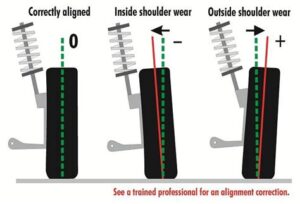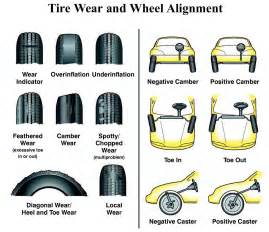Maintaining your vehicle’s alignment is crucial for ensuring a smooth and safe driving experience. However, many car owners often wonder, How long does it take to get a car aligned? In this article, we will delve into the typical duration of the car alignment process, exploring various factors that can influence this timeline. We’ll break down the steps involved in achieving proper alignment, highlighting the benefits of understanding the expected timeframe. Whether you’re a first-time car owner or a seasoned driver, knowing what to expect after your car alignment—both in terms of timing and the improvements to your vehicle’s performance—can empower you to make informed decisions for your ride. Join us as we demystify the car alignment process and equip you with the knowledge you need to keep your vehicle in top shape.
Understanding How Long Car Alignment Typically Takes
When considering how long it takes to get a car aligned, it’s important to understand that the process generally takes anywhere from 30 minutes to a couple of hours. This timeframe can vary based on several factors, including the type of alignment your vehicle requires and the workload of the service center.
Typically, a standard alignment involves adjusting the angles of the wheels to ensure they are perpendicular to the ground and parallel to each other. In most cases, a basic two-wheel alignment can be completed more quickly than a four-wheel alignment.
Additionally, if your vehicle requires any additional repairs or if the service center is particularly busy, the total time might increase. However, the average time frame is a useful guideline to keep in mind as you plan your visit to the mechanic.
Factors That Affect How Long Car Alignment Requires
When considering how long car alignment will take, it’s essential to understand that various factors can impact the duration of the process. Here are some key factors:
- Vehicle Type: Different vehicles have different alignment specifications. Luxury and high-performance vehicles may take longer due to more complex alignment systems.
- Alignment Type: The type of alignment needed—two-wheel or four-wheel—will determine the time required. Four-wheel alignments typically take longer.
- Condition of the Vehicle: If your vehicle has worn suspension components, it may need additional repairs before alignment can occur, extending the time required.
- Technology Used: The alignment equipment used can also affect timing. Advanced, computerized alignment systems can often carry out the alignment faster than traditional methods.
- Expertise of the Technician: A skilled technician may be able to complete the alignment process more efficiently, thereby reducing overall time.
- Shop Busy Periods: The time required can vary depending on how busy the alignment shop is. Higher customer volume may lead to longer wait times.
- Pre-Alignment Inspection: If a thorough pre-alignment inspection is conducted, it may take additional time to identify and address any issues affecting alignment.
Taking these factors into account can give you a clearer picture of how long you might expect to stay at the shop for car alignment services.
Steps Involved in the Car Alignment Process
Getting a car aligned is a methodical process that ensures your vehicle drives straight and all tires wear evenly. Here are the essential steps involved in the car alignment process:
- Inspection of Tires: The technician begins by inspecting the tires for uneven wear, damage, and proper inflation. This step is crucial as it helps identify any underlying issues that could affect alignment.
- Checking Steering Components: The next step involves examining the steering and suspension components for wear and damage. This ensures that all parts are in good condition before alignment is performed.
- Using Alignment Equipment: High-tech alignment equipment is then employed to measure the current alignment angles. This typically involves placing sensors on each wheel to determine alignment settings accurately.
- Adjusting Angles: Based on the readings collected, the technician makes necessary adjustments to the camber, caster, and toe angles to restore the vehicle to the manufacturer’s specifications.
- Final Inspection: After adjustments, a final check is performed to ensure everything is aligned correctly and that the vehicle meets safety standards.
- Test Drive: A short test drive may be conducted to verify that the car handles properly and that the steering wheel is centered.
Overall, knowing the steps involved in the alignment process can help you understand how long the service might take and prepare for any additional repairs needed beforehand. Regular maintenance and timely alignments can contribute to the longevity of your tires and enhance driving safety.
Benefits of Knowing How Long Car Alignment Will Take
Understanding how long car alignment will take can provide several benefits for vehicle owners. Below are some key advantages:
- Improved Planning: Knowing the estimated time for car alignment helps you plan your day more effectively. Whether you’re scheduling a service or deciding to wait, you can manage your time better.
- Cost Efficiency: Being informed about the timeline can help you avoid unnecessary costs. If you know how long the process typically takes, you can choose to get other errands done instead of waiting at the shop.
- Reduced Disruptions: Understanding the alignment timeline can minimize disruptions to your daily routine. You can arrange for alternative transportation if needed or adjust your schedule accordingly.
- Better Communication: Knowing what to expect allows you to communicate more effectively with service technicians. You can ask informed questions and understand the service you are receiving.
- Proactive Vehicle Maintenance: Being aware of the timing for car alignment can prompt you to stay on top of regular maintenance, ensuring your vehicle remains in optimal condition.
Knowing how long car alignment will take enables you to make informed decisions, enhances your overall experience at the auto repair shop, and contributes to better vehicle management. This awareness not only saves you time but also enhances your vehicle’s performance by maintaining proper alignment.
What to Expect After Car Alignment: Timing and Results
After completing the car alignment process, it’s essential to understand what to expect in terms of timing and results. Typically, once your car has been aligned, you can expect an immediate improvement in handling and steering precision. However, the full benefits may take some time to fully manifest.
Following alignment, your vehicle should drive straighter, and you may notice reduced tire wear if alignment issues were previously affecting your tires. While the physical changes are instantaneous, certain adjustments in driving behavior will be necessary to reap the full benefits.
Here’s a breakdown of typical expectations:
| Time Frame | Expected Results |
|---|---|
| Immediately after alignment | Smoother steering and reduced pulling |
| 1-2 days | Gradual improvement in ride quality |
| 1 month | Noticeable decrease in tire wear |
| 3 months | Consistent performance improvements |
It’s essential to monitor your vehicle’s performance over the following weeks. If you notice any unusual behavior, such as pulling to one side or uneven tire wear, it could signify that the alignment needs to be checked again. Additionally, regular maintenance and periodic alignments are vital for ensuring long-term results. By knowing how long to expect the benefits and necessary adjustments, you can better maintain your vehicle’s performance.
Frequently Asked Questions
What is a wheel alignment?
A wheel alignment is the adjustment of a vehicle’s suspension to ensure that the wheels are positioned correctly relative to each other and to the road.
How often should you get a wheel alignment?
Typically, it is recommended to have a wheel alignment every 6,000 miles or whenever you notice signs of misalignment, such as uneven tire wear or steering issues.
How long does a wheel alignment take?
A standard wheel alignment generally takes about 30 minutes to an hour, depending on the type of vehicle and the shop’s workload.
What are the signs that my car needs an alignment?
Common signs include uneven tire wear, the steering wheel being off-center, the vehicle pulling to one side, and a shaking steering wheel.
Can I drive my car if it needs an alignment?
While it is possible to drive a car in need of alignment, it can lead to further tire wear, poor handling, and increased fuel consumption.
Is a wheel alignment the same as a tire rotation?
No, a wheel alignment adjusts the angles of the wheels, while tire rotation involves changing the positions of the tires to ensure even wear.
How much does a wheel alignment cost?
The cost of a wheel alignment can range from $50 to $100 on average, but it can vary based on the vehicle and the service provider.





